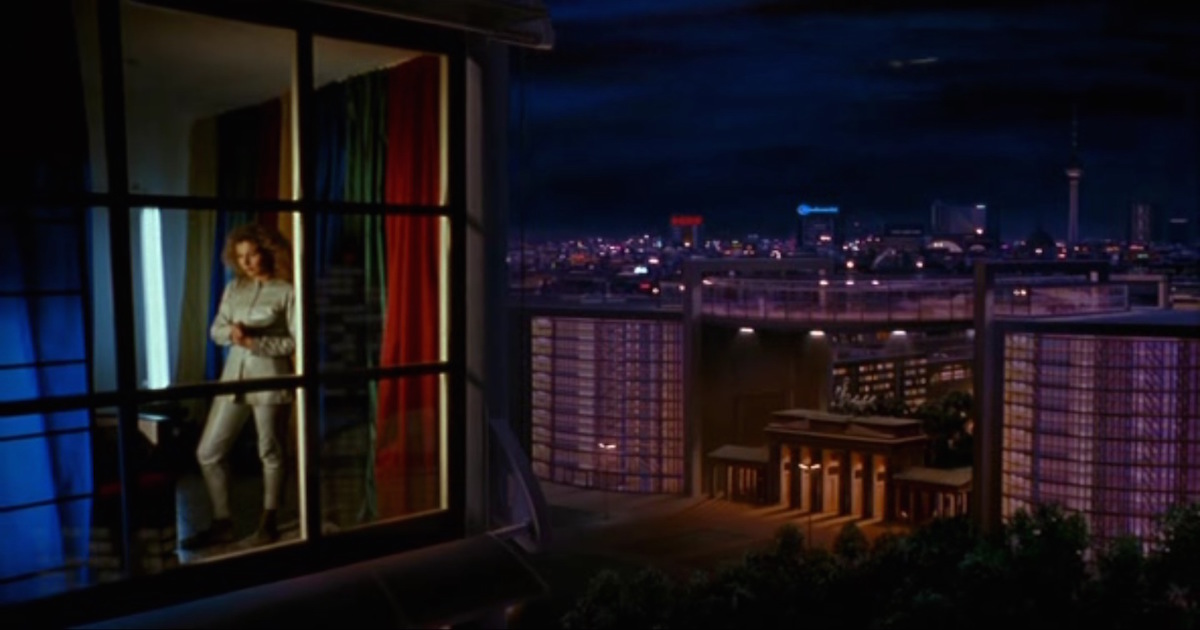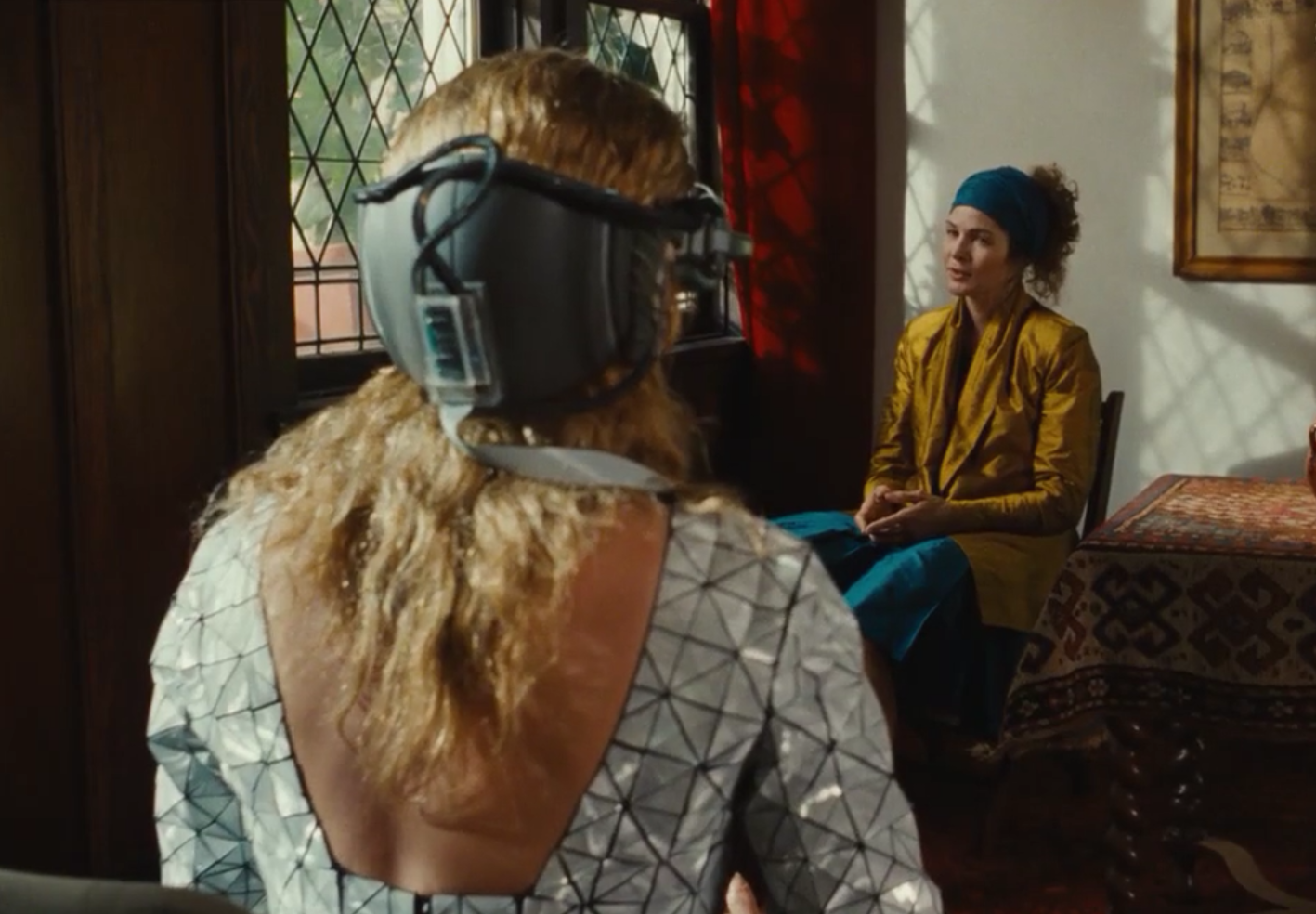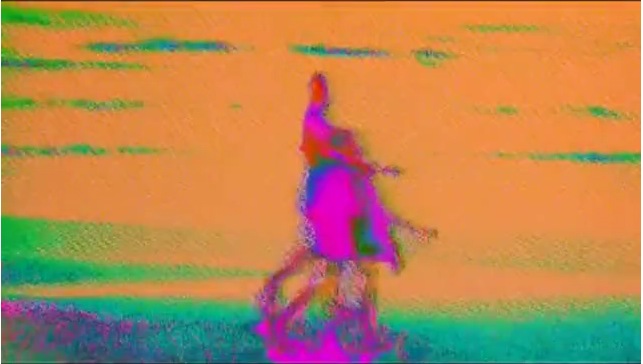
Whether from those who defended it upon a truncated 1991 release, the lucky few present for a rare screening of the mythologized directors cut, or even the frustrated auteur himself, Janus Films’ restoration of the five-hour version of Wim Wenders’ Until The End of the World would seem to provide ample opportunity for an I Told You So emerging from the cinematic choir. An I Told You this needed 295 minutes to really work. I Told You contemporary geopolitical anxieties are directly tied to a culture of oversaturated images. I Told You we’d have GPS in our car and that U2 would still be making music at the turn of the century.
None of which says really anything about the film, of course. As with any other ‘lost’ film circulating in cinephilic chatter, Wenders’ masterpiece has spent the better part of the last two decades as more myth than movie, its narrative reduced to production woes not found on a single page of the script. Now that we finally “have” it (despite being available on disc in Europe for about ten years), American audiences familiar with the myth may find the completed project waning in what they had imagined as “the ultimate road movie” for its upcoming 25th anniversary.
Such is the problem of cinematic mythologizing, which unfortunately here obfuscates just how ambitious Wenders’ film is. It is a behemoth picture with a severe identity crisis. It is a road movie with bank robbers, an impotent Philip Marlowe wannabe, and almost all the technology in your iPhone predicted within a noir-tinged espionage subplot. A post-apocalyptic dirge for the future of humanity, with Max Von Sydow conducting underground experiments on the visualization of dreams. And all the while, it’s narrated by Sam Neil, who as a novelist, may or may not be writing the whole thing down for his next great piece of literature. It is all those things and it is also none of them, because it isn’t really even a movie. That it got torn to pieces by Warner Brothers in 1991 makes total sense; that it is finally being understood for what it is in a post-HBO miniseries world does as well.
The film opens on the disguised face of Claire Tourneur (Solveig Dommartin), departing a very 1980’s party in 1999 Venice under the dizzying drone of David Byrne and the Talking Heads (the soundtrack, featuring contemporary artists imagining what they may sound like ten years in the future, was the only critically or financially successful element of Wenders’ project upon its original release—ironic considering you can’t say the same for the accuracy of each’s predictions). After she finds herself stuck in a traffic jam filled with frantic drivers trying to escape a falling nuclear satellite (just run with it), she decides to turn off the side of the road to make her own way, chastised by the digital voice in her dashboard reminding her that the dead-end of concrete, tires, and anxiety is the only thing actually mapped within its computer database.
After running into two bank robbers who inexplicably have a gigantic pile of just about every currency on Earth, Claire takes up the road for Paris before running into a mysterious hitchhiker named Trevor (William Hurt), on the run from some sort of powerful global authority tracking him through facial-identification software, handheld GPS tracking, and a myriad of other technologies appearing jarringly dystopic in 1991, but which now might remind us of the ubiquitous technological commodities permeating a post-Snowden world.
The film is essentially broken into two distinct sections, the first following this noir-esque caravan from Venice to Paris, Berlin, Moscow, China (famously filmed with a handheld digital camera after Wenders failed to acquire permits from the government), Tokyo, and San Fransisco. This global jaunt becomes convenient for Trevor, who is in possession of a bizarre camera which records brain signals in an attempt to cure blindness through cognition—decoupling the act of seeing from its biological form into one of cultural critique, across borders, cultures, languages, and time itself. For here the camera itself is making its user start to go blind himself, and suddenly the act of seeing becomes the act of producing images—Wenders’ most prescient critique of cinema itself as images begin to move out from the cinema screen to cell phones, moving billboards, wearables, and watches.
By the time the film manages to drag its entire ensemble to the desert of Australia, serene in its iconography of both the end and beginning of time, Wenders shifts gears so abruptly that you can’t help partially understand why Warner Brothers freaked out upon receiving the original cut of the film back in 1991. What was once a road movie tinged with futuristic noir trappings becomes an austere chamber drama obsessed with the fate of the image, tied to memory, after the (possible) destruction of the contemporary geopolitical order.

An early scene from Claire and Trevor’s use of the camera gives us a meticulously staged rendition of a Vermeer—shot in painterly yellows, reds, and blues, echoing the dispersal of light the Dutch master was known for. But later, in the film’s confounding second half, we are given pixelated blurs, light warbling like bubbling liquid, unintelligibility.

Confusion reigns supreme both in the state of civilization and the efficacy of the camera—both Wenders’ and “Trevor’s”—to provide a holistic image which can responsibly and ethically relate to the world from which it was produced. If it isn’t Wenders’ way of questioning his own lens, then it is perhaps a question of all lenses, all cameras.
This clearly ran straight over the heads of studio executives, who then decided the best solution for the problem their trusted German auteur had given them was to chop it all up and sell it as some sci-fi adventure flick with accompanying music for sale at your neighborhood Sam Goody. You kind of have to wonder what they expected in the first place. But it is this question of the fate of the cinematic image itself that unites the two halves of Until the End of the World, as Claire’s travels are peppered with Parisan men wearing moving electronic billboards warning of the impending apocalypse, television screens on ubiquitous communication devices, and even a radically decentered, unstable identity for Claire herself to hold onto as she dons wigs and disguises on her journey from continent to continent, playing an actress with a camera herself, recording her travels as she tries to uncover more about the identity of “Trevor” and his device.
By the end of the film, Wenders’ interrogation of the fate of the cinematic image seems to exhaust itself, as a strange subplot of image addiction suddenly finds itself demanding attention as The Issue of the film. Here, “Trevor’s” camera device, which we come to find was designed by his obsessive scientist father (Max Von Sydow) is turned inward as the actual reproduction of the external world through brain signals gives way to an attempt to record dreams themselves. Losing its real world referent, the cinematic image here becomes not a representation of what is outside one’s self, but becomes, instead, a parasitic self-indulgent escape from reality, perhaps a way to cope with the impending crisis of contemporary society, post-or-pre-apocalyptic.
Wenders doesn’t seem to have an answer for this (beyond, uncomfortably, tossing Claire into what looks not unlike an internment camp while she screams for new batteries for her viewing device), and by the end, the film seems to be both yearning for a return to the natural order of things, away from mediated technology run amok, as well as back to the more responsible mode of seeing which served as a refuge from a society leaving its defenseless left behind.
And still, yet, there is something really remarkable going on here. Is it a good movie? I don’t know, but part of me wonders if you can even use the same framework to read this as we do Wings of Desire, or Paris, Texas, especially in a post-Game of Thrones media climate where the line between multi-hour televisual content and a 120-minute “film” continues to blur into oblivion. And yet amidst it all, somewhere, up above, stands a semi-transparent angel with towering wings, watching it all the same, the image mediated or unmediated, from the self or outside of it. I don’t know if he Told You So, but he is still stuck there all the same.





![Bergman Island (The Criterion Collection) [Blu-ray]](https://criterioncast.com/wp-content/uploads/2022/11/bergman-island-the-criterion-collection-blu-ray-400x496.jpg)
![This Is Not a Burial, It’s a Resurrection (The Criterion Collection) [Blu-ray]](https://criterioncast.com/wp-content/uploads/2022/11/this-is-not-a-burial-its-a-resurrection-the-criterion-collection-blu-ray-400x496.jpg)
![Lars von Trier's Europe Trilogy (The Criterion Collection) [The Element of Crime/Epidemic/Europa] [Blu-ray]](https://criterioncast.com/wp-content/uploads/2022/11/lars-von-triers-europe-trilogy-the-criterion-collection-the-element-of-400x496.jpg)
![Imitation of Life (The Criterion Collection) [Blu-ray]](https://criterioncast.com/wp-content/uploads/2022/11/imitation-of-life-the-criterion-collection-blu-ray-400x496.jpg)
![The Adventures of Baron Munchausen (The Criterion Collection) [4K UHD]](https://criterioncast.com/wp-content/uploads/2022/11/the-adventures-of-baron-munchausen-the-criterion-collection-4k-uhd-400x496.jpg)
![Cooley High [Criterion Collection] [Blu-ray] [1975]](https://criterioncast.com/wp-content/uploads/2022/11/cooley-high-criterion-collection-blu-ray-1975-400x496.jpg)